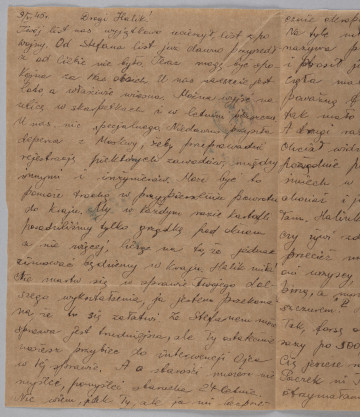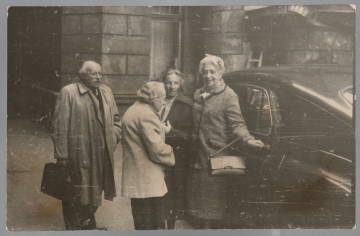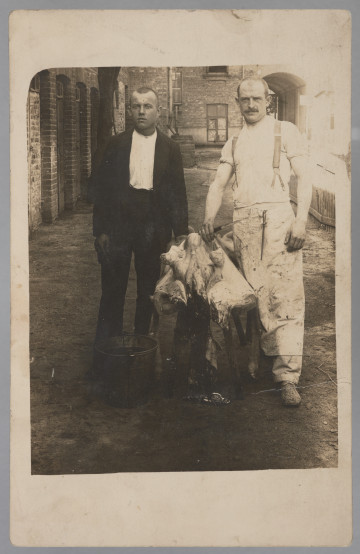
A letter
1945
Museum of the history of Polish Jews
Part of the collection: Polish and European goldsmithery of the 17th–19th c.
The mug was made in the first half of the 18th century in the Swedish city of Norrköping. Little is known about its maker, the goldsmith Johan Pettersson Berg, but his wares keep appearing on the antiquarian market, hence the conclusion that he worked long and efficiently. The surface of the cup is covered with decoration with an exciting theme that seems to echo recent events. The three men depicted are undoubtedly soldiers of the Swedish army, whose victories in the previous century brought Sweden territorial gains and a role as a significant power in European politics. They are dressed similarly in knee-length buff trousers, leather jackets, the so-called pantyhoses or doublets, and wide-brimmed hats. Their footwear is different, indicating that they belong to different formations. The two men talking to each other are wearing low, laced boots, like the infantry, while the third is a cavalryman in knee-high boots, the so-called 'botforts', used for horse riding. The goldsmith must have never 'smelled gunpowder' because he changed the soldiers' weapons. Thus, one infantryman is leaning on a lance, a typical cavalry weapon, while the cavalryman is holding a halberd, used by infantrymen against the cavalry to throw riders off their horses. The decoration, made in the technique of repoussé and engraving, makes the inner surface of the vessel uneven. There is also no trace of gilding on the interior, commonly used to maintain cleanliness and prevent corrosion. These features allow us to assume that the cup was not used for drinking but throwing dice. The game was popular in all European armies as entertainment for resting soldiers.
Barbara Czajkowska
Author / creator
Dimensions
cały obiekt: height: 7 cm, width: 8,5 cm
Object type
goldsmith's art
Technique
repoussage
Material
silver
Creation time / dating
Creation / finding place
Owner
The National Museum in Lublin
Identification number
Location / status

1945
Museum of the history of Polish Jews

2. ćwierć XX wieku
Museum of the history of Polish Jews

1916
Museum of the history of Polish Jews
DISCOVER this TOPIC
Castle Museum in Łańcut
DISCOVER this PATH
Educational path